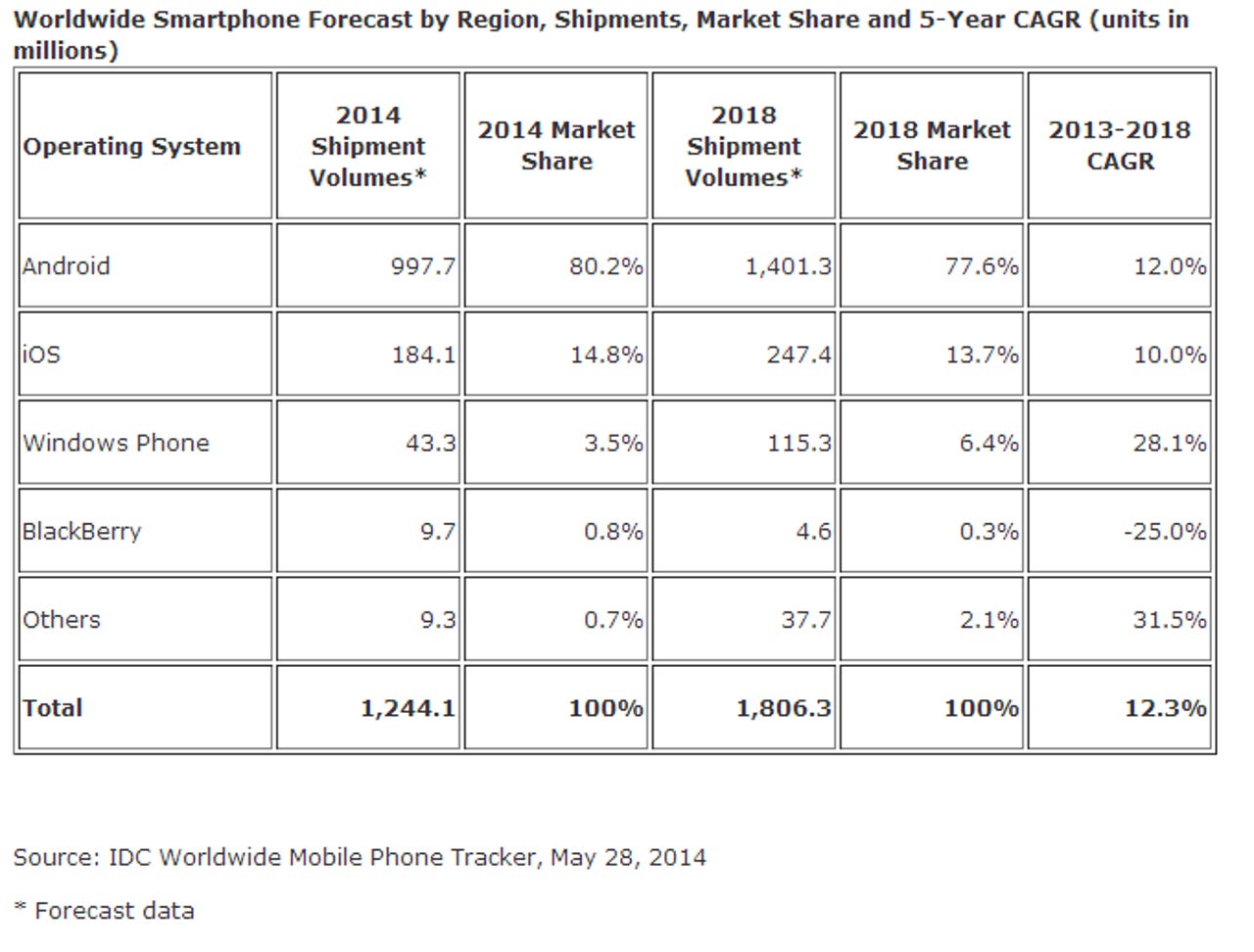IDC: Smartphone growth to continue, reach 1.2 billion in 2014

As we approach the middle of 2014, IDC released its mobile phone forecast that predicts total sales of smartphones will reach 1.2 billion units before the end of the year, a 23.1 percent increase over 2013.
Android continues to dominate these sales with an estimated market share of 80.2 percent in 2014.

Given that emerging markets in India, Indonesia, and Russia will likely drive smartphone sales for the next few years, iOS volumes will continue to remain fairly steady. iPhones have the highest average selling price (ASP) and with desirable phones in these markets selling at the sub-$200 level there won't be much growth in iPhone sales.
Ramon Llamas, Research Manager with IDC's Mobile Phone team, stated:
"What makes smartphone growth so amazing is where the growth will be taking place. Smartphone shipments will more than double between now and 2018 within key emerging markets, including India, Indonesia, and Russia. In addition, China will account for nearly a third of all smartphone shipments in 2018. These – and other markets – will offer multiple opportunities to vendors and carriers alike, but the key will be balancing affordability with expectations."
Windows Phone continues to slowly gain in market share. I personally think Nokia's inability to launch a flagship device across all carriers is hurting its growth rate in the US market. The company's low-end devices are selling well, likely driving this minimal growth.
The latest IDC May 2014 predictions also now show BlackBerry dropping below 1 percent market share in 2014.
In February IDC predicted that the ASP by the end of 2014 would be $308. They now predict it will be a bit higher at $314, but still lower than last year's measured $335. Companies like Motorola and Nokia/Microsoft are releasing functional devices at much lower cost than we have seen in the past and consumers are buying them up.
Related:
- IDC: Apple's high ASP more than double others, keeps it below 15 percent
- In a smartphone slump? Look beyond the slab factor
- Republic Wireless Moto G hands-on: Half the cost of the X with same solid Wi-Fi calling experience
- Top 5 Android smartphones: Nearly perfect - in different ways
- OnePlus announces Android smartphone with better specs than new flagships at half the price